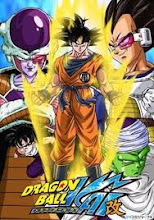Famous Muay Thai Boxers
Phraya Phichai
Muay Thai is a national sport of Thailand as well as a national passion. Known as the science of eight limbs Muay Thai kickboxing uses the knees and elbows as well as kicks and punches.
Phraya Phichai
Phraya Phichai (th: พระยาพิชัย), or popularly known as Phraya Phichai Dap Hak (th:พระยาพิชัยดาบหัก; Phraya Phichai of the broken sword) (born: 1741 at Ban Huai Kha,Amphoe Phichai, Changwat Uttaradit; died: unknown) was a historic Thai nobleman inAyutthaya Period who fought the battles with two swords in both hands until one of which was broken
Phraya Phichai was a
Siamese general serving under King
Taksin. After the fall of
Ayudhya in 1767, Phraya Pichai and
Chao Phraya Chakri (who later become the first King of
Chakri Dynasty) followed Phraya Taksin in repelling the Burmese and reuniting Siam. They were considered Phraya Taksin's left and right hands.
In 1782, King
Taksin showed signs of
mental illness. At that time, the nation still lacked stability and was in need of a strong ruler. A coup executed King Taksin, then the throne was offered to Chao Phraya Chakri. Phraya Pichai, a devout follower of King Taksin, was not spared, and by most account, requested for his own execution to follow King Taksin to his death. He was executed soon after.
He gained the name 'Phraya Phichai Dabhak' or 'Phraya Pichai Broken Sword' in a battle in which he kept fighting (and won) even after one of his blades was broken in half.
Birth
Phraya Phichai was born in 1741 at Ban Huai Kha, Amphoe Phichai, Changwat Uttaradit, having four brothers and sisters but three of them died before Phichai”s birth. His parents were unknown. His birthname was Choi (th: จ้อย; means: the little one). Childhood
When Choi was a young boy, he loved to practice Thai boxing and would always be running away without his parents knowing, to train in the art. He trained with many teachers of that time. One day, Choi left home northernwards and met with a boxing instructor named “Thiang” (th: เที่ยง) at Wat Ban Kaeng (th: วัดบ้านแก่ง). Choi then became a beloved student of Instructor Thiang and renamed as “Thong Di” (th: ทองดี), his instructor called him as “Mister Thong Di Fan Khao” (th: ทองดีฟันขาว; means: Thong Di whose teeth are white) as he did not chew betel nut. The Thai people loved chewing betel nut, which made their teeth black, since the ancient time until the Government under the premiership of Field Marshall Plaek Phibunsongkhramissued ban on chewing the nut in 1942. Serving the Crown
One day, Phraya Tak was holding a boxing contest in the city of Tak during a traditional festival. Now a young man of twenty years, Thong Di asked the ring master to find him a match. The towns people having never seen the boxer before suggested that he take an opponent who had little experience so that it would make an exciting fight, but Thong Di insisted that he would fight the most skillful boxer in the town. A famous boxing master of Tak, Arjarn Nai Hao, who nobody dared to challenge, gladly agreed to take the fight, knowing that those who had challenged the master before had been soundly and thoroughly beaten, why should this young upstart be any different? A huge crowd gathered to see the young boxer Thong Di fight the invincible Nai Hao.Throughout the bout Thong Di showed brilliant Thai boxing style.
Seeing a resounding victory over Nai Hao after witnessing such a formidable display, Phraya Tak showed no hesitation in asking Thong Di to join his army. On many occasions, Thong Di would display his talents in the Thai boxing ring before Phraya Tak (later to become King Taksin the great of Thonburi). His skill and bravery in the ring and the fact that no other boxer could defeat Thong Di, were very pleasing to Phraya Tak who appointed him to be his personal bodyguard.
The Emperor of China Kao Tsung, was alarmed by the military might of the Burmese. From 1766- 1769, the Emperor sent his armies four times to subdue the Burmese, but all four invasions failed. Siam was under the control of the Burmese since the sacking of Ayutthaya, but had to withdraw the bulk of its army from Siam to ward of the Chinese invasions, leaving behind only a small contingent. Phraya Tak taking advantage of the situation, organized his force and revolted.
Phraya Tak; At first was a guerrilla leader with only five hundred followers but within fifteen years his dominion was to embrace all of Siam. During the revolt Taksin managed to escape to Rayong on the East coast of Siam. Here with the help of Phraya Phichai, now his Commander-in-Chief, raised an army and declared all out war on Burma. The action was to eventually regain freedom for the Siamese people.
Phraya Phichai or (Thong Di), under the guidance of Phraya Tak and using guerrilla tactics, won back many small towns and villages from the Burmese. It was during one of the many battles, that Thong Di was to become famous. In 1773 an army under celebrated Burmese General Bo Supia was sent to capture the City of Phichai. Thong Di led the Thai army and fought him at Wat Aka and Phraya Sura Sri helped him battle the Burmese. The Burmese general was driven into retreat while sustaining great losses to his troops.
.jpg)
.jpg)


